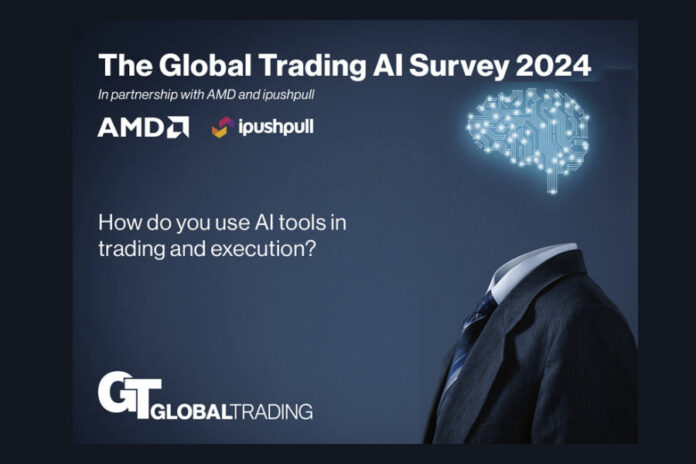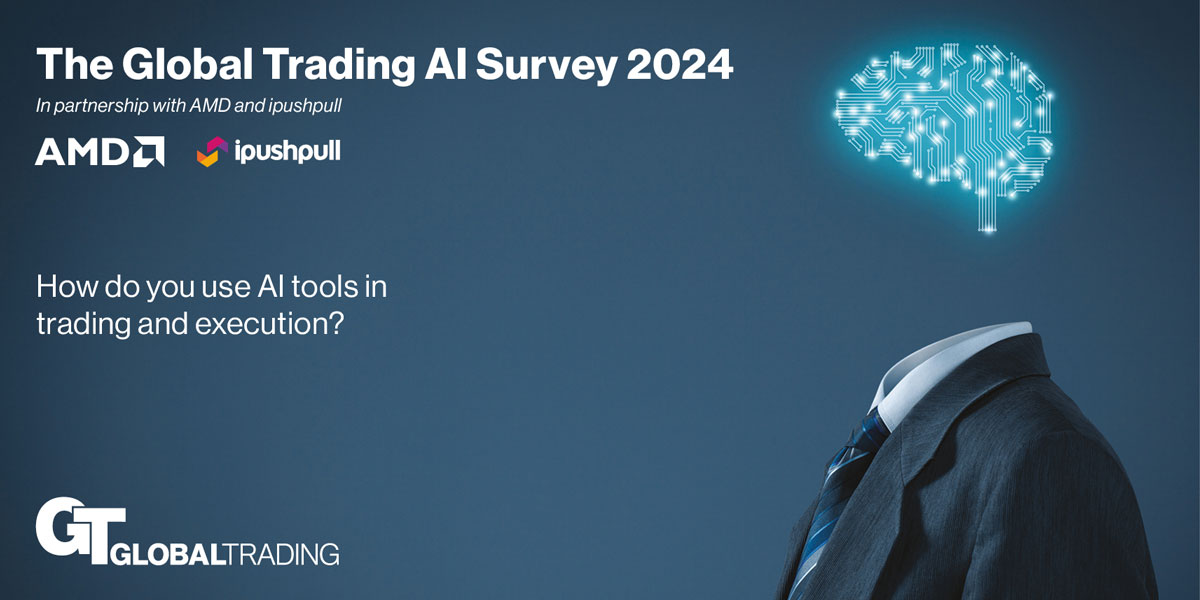
In his first ever interview with the press, Macquarie Asset Management’s global head of equity trading, talks to Laurie McAughtry and looks back over his long and varied career to discuss the lessons learned – and the wisdom gained – from three decades of running some of the biggest desks in the business. For this quiet titan, relationships are at the heart of everything he does – and personal connections form the foundation of his success.
You might not be familiar with the name Mike Kopfler – but you’ll know his work. The self-effacing veteran has spent over 25 years building and running some of the biggest brands in trading – including as head of fixed income and of global cash equities trading at Fidelity Investments, global head of trading at Fidelity International, stints in London and Hong Kong, and experience building out FX and multi-asset desks with AUM upwards of US$1 trillion. Now global head of equity trading at Macquarie Asset Management, Kopfler is taking a breather from his travels, speaking from Philadelphia, where he now runs the US$140bn trading desk of the APAC-based behemoth.
Looking back at the long climb of his career from the chair in which he now sits, he explains the crucial lessons he has learned to reach where he is today – central to which is a deep-rooted belief, founded in factual observation, that people lie at the heart of trading. Good people make for good outcomes, says Kopfler, and treating them well is simply good business sense.
“I can teach you to trade, but I can’t teach you to care,” he tells GT editor Laurie McAughtry. “It’s about the ability to create connections and build relationships. Humility and diversity are fundamental to success on the desk – while from a business perspective, there is also an issue of psychological safety, the comfort to disagree, to achieve the best outcome you can for clients.”
The story begins
Born in Louisiana and growing up in New Orleans, Kopfler never envisaged a career in trading. After going to school in Boston, and playing baseball throughout his college career, sports marketing was the path he planned to follow. But in a difficult economic climate and with jobs scarce, he ended up falling into a role as a fund accountant. “It was very much an entry-level position, working the books. The benefit was that I got to know a mutual fund inside out.” After a year or so though, he realised that there was more out there to achieve – and the buy-side was where he wanted to be.
He took a job with a firm called Scudder, Stevens and Clark (which subsequently became DWS Scudder, the asset management arm of Deutsche Bank, and eventually spun off into the independent DWS Group, listing on the Frankfurt Stock Exchange in 2017) as a compliance officer. “In an asset management firm like Scudder, everyone pretty much wants to end up a portfolio manager – but I learned pretty quickly that that was not my skillset. I didn’t want to sit in an office and read a lot of 10-Ks and company reports. I was drawn towards the trading side of things – and especially, to the personalities of the folks I met there.”
He subsequently moved to the investment operations group, working directly to support PMs and traders in the global bond group. “The thing I remember most about that job is that we were literally sitting behind this wall – an actual wall. I asked if I could do the same job but sitting on the trading desk next to the traders and they said yeah sure, no one has ever asked before, but why not. So I was able to sit next to the traders, and just learn by listening and engaging with the traders and portfolio managers. I enjoyed it so much, and that’s when I first started trading US high yield and emerging market bonds.”
The big move
In 1997, Kopfler moved to Fidelity Management & Research (FMR, now known as Fidelity Investments) as an emerging markets bond trader, but he never forgot his grounding in the early days of accounting, compliance and investment operations. “During those first five years prior to joining Fidelity, I learned the whole ecosystem by which the buy-side operates. I learned to appreciate the people that are collaborative with you and those that are not – and you really remember that.”
During his first year with Fidelity, he travelled outside the US for the first time – a transformative experience, flying to Paris to meet French banks to discuss Paris club debt and then on to Turkey to talk about Turkish T-bills, before finishing up in London. “What I realised was that I could be sitting in Boston dealing with a broker in New York who is talking to their colleague in London who is then speaking to the trader in Turkey. Why weren’t we just talking directly to Turkey?” The lesson he learned was that putting names to faces, especially with people outside the US, was invaluable.
Within a year, he had joined Fidelity’s US high yield trading desk, a role he held for around eight years before moving on to run the International Equity desk in 2006 – the seminal move of his career, and one that cemented his belief that relationships were central to success.
“Switching from fixed income to equities was a big leap in process, protocol and technology, at a time of tremendously high turnover for the desk. It was my first time managing, and I had to learn a whole new business, which was a baptism of fire. I was working with people who had been trading equities for 15-20 years, and I had zero experience – but it was my first chance to build relationships, work with a team, and support people in a long-lasting way. Everyone will follow a boss because they have to. As the newbie, I had to learn how to bring people on the journey with me because they wanted to.”

London calling
The next big step came in 2012, when the opportunity arose to move to London with FMR to set up a whole new equities trading desks. “Living and working in a different country, moving my family here, building from the ground up, hiring people and building relationships with the sell-side and the buy-side, was a revelation.”
Between 2012-16 he established and managed trading desks in London and Hong Kong as co-head of global equity cash trading, leading 14 traders and driving a number of key initiatives including increased electronic usage and analytics, which together with co-location of desk with PMs and analysts, led to lower commissions paid and improved execution. During this time he also became the head of global FX trading, serving as business lead for the firm’s FX centralisation project across equities and fixed income, building a new OMS/EMS for FX, integrating FX order management with equity and fixed income trading, and managing London and Boston FX traders. It was a busy time.
“The significance here was moving to a whole new country with my family, establishing a brand-new trading desk in two different countries – but having to still work very closely with the folks back in the US, where the bulk of our portfolio managers still sat. I spent a lot of time creating this web of relationships, and it was an amazing experience.”
Changing places
In 2016, Kopfler decided to spread his wings – moving to the Fidelity International (FIL, first established as the international investment arm of FMR before becoming independent and employee-owned in 1980) in a new role as the global head of trading in London, working across asset classes. There was always a strong relationship between Fidelity and FIL, and when the former head of equity trading from Fidelity in Boston, Brian Conroy, became the president of FIL in 2015, he brought Kopfler along to unite the trading for the firm. Once again, Kopfler’s fundamental focus on – and faith in – people and relationships came into play.
“Ultimately, it’s about leveraging each other internally and bringing everyone together across asset classes. We restructured the equity desk to integrate it further with the PMs and united the tactical and the fundamental, looking for traders who had both a commercial sense but also a strong EQ. I want people who are comfortable getting out of their seat and going to talk to the portfolio manager or analyst down the hall.
“At the end of the day, if you think about a buy-side trading role, it’s not a pure risk role, there’s no PnL. The skillset is similar to that of a sales trader, they have to work externally with the sell-side but their client is the PM, and their job is to add value.”
The role was broad geographically with trading desks in London, Hong Kong, Shanghai, FX trading in Dublin, and eventually an Americas trading desk in Toronto. It echoed 1997, when he visited Paris, Turkey and London for the first time. “Living in London, immersing myself in these cultures, experiencing rather than visiting – all that was essential,” he explains. “Both from a personal and professional standpoint, access to all these different markets and different ways that people were doing things was really significant to my journey.”
Homecoming
In 2019, however, Kopfler decided that for the sake of his family – and especially his four children, who were at school in the US – it was time to return to home. Fidelity Investments created a new role for him as head of fixed income trading, which he ran for two years before a restructuring saw him leave the firm in late 2020. “I turned to my wife and said look, this is the first time I’ve ever stepped off the treadmill in my life. Let’s go.”
It was the middle of Covid, and the country was deserted. The Kopflers took a seven-week road-trip through the Western US, that Kopfler credits as crucial to figure out what he really wanted to do. “It was an amazing time to travel. There was no one around, and it was a strongly reflective period in my life. I had to decide how I wanted to move forward.”

A new start
Eventually, he would conclude that trading was still part of who he was – and he wasn’t ready to lay down the baton. At the same time, Macquarie Asset Management were looking for someone to run and review their trading function, and after a series of conversations, Kopfler took up the role of global head of equity trading in May 2021. Knowing Macquarie well on the sell-side, he was very comfortable with both the culture and the mandate.
“The structure of Macquarie was different, but the end goals are the same. We focus on individual boutique investment teams here, it’s all about collaboration, but it’s also independent. That’s a really interesting and productive way of doing things.”
All about people
One of Kopfler’s key themes is consistency. “Regardless of the asset class, whether trading equity or fixed income or FX, it’s all basically the same. Your job is to go out and buy and sell the security, do it well, and the way you do it well is by having a strong relationship with the people you are trading with and for. Over my entire career, trading has been independent – we don’t report into the PMs, it’s a client mindset, it’s about partnership, and success relies on that PM relationship, no matter what asset class you’re trading.
“At the same time, you have to have a great relationship with the Street, so that you know what’s going on. We operate in a very competitive environment and you need to keep people incentivised to talk to you. Ultimately, on the buy-side, the easiest way to do that is to treat people the way you want to be treated. Be engaged. When the sell-side reaches out, you want it to be a pleasant, fair conversation where they learn something too, because that’s what will keep them coming back – regardless of the size of your book or your commission wallet. Ultimately, we’re just a bunch of humans, and you want to deal with folks you feel comfortable with. I think that’s true across the board, and that’s core to how I try to operate.”
The importance of EQ
Kopfler firmly believes that progress comes from diversity and positivity. “Change is inevitable – what matters is how you handle it. What I have always liked about trading is that every day is a new day. Some of the processes might be the same but the information you are working from is different every time. You need to have people on your team with the mental flexibility to thrive, and that comes from different backgrounds, different experiences, different approaches… it’s an old saying, but you’re going to attract more bees with honey than with vinegar.”
He believes that these days, a strong level of EQ is vital to being a good trader. “The recruitment process is vital, because you need to get the right people in the right seats. The technical skill is important, but the fit is equally important. I’m not looking for someone in a foxhole, I’m looking for a great roommate. It’s about results-driven respect – for each other, for the position, and for the organisation you work for.”

A convergence of classes
In his 30-year career, Kopfler has seen the markets evolve beyond all recognition. So what have been the biggest changes – and where are we headed next?
“What has been very interesting is witnessing the changes in fixed income trading in my most recent previous role. Regulation has had a huge impact, particularly in the post-GFC world and especially in the fixed income space, where the trading has changed from being balance sheet-driven to more of agency model – much more like equities, where you have to find the other side of the trade.”
Additionally, Covid and the increased importance of passive products in the fixed income space has also transformed transparency, he believes, as well as pushing the envelope around technology, and that has changed how one might access liquidity in the fixed income market.
“The journey was truly eye-opening. When I was trading fixed income 20-30 years ago it was about writing down the bid-offer spreads in a notebook and then finding out where you can trade your size. Now, you know what the market is electronically, and it’s all about how you find that liquidity.”
Due to Covid, Kopfler transitioned to working from home while at Fidelity and also joined Macquarie in the middle of Covid, and it changed the way he saw trading.
Now, he believes the way we trade is converging. “I always thought there was a confluence of how things worked, and if you throw in the technology, the regulation, the product, I think we’re seeing a coming together around the role itself. There are a lot more opportunities now to get scale, efficiency and transparency using data analytics in the fixed income world now, the same as we have on the equity side. And it works both ways. Trading small cap stocks and other equities in the inefficient parts of the market, which is a specialisation at Macquarie, is a lot like trading a corporate bond.”
A trader through and through
Kopfler doesn’t have a favourite class to trade. “It’s like asking my favourite child. I’m not an equity person or a fixed income person, I’m a trading person. I enjoy all of them and I especially love the similarities between equity and fixed income. The world is moving towards a singular point, we’re all automating towards that now.”
As such, he advises junior traders to focus on the similarities, rather than the differences – and work towards building cross-asset skills. “The benefit of my background, and my focus on relationship-building, is that I’ve managed to create a very strong foundation of working with others and getting things done. I think that translates and transcends across asset class, and that would be my advice to others.”

Change is constant
But what gets him really excited is the opportunity to improve things, and to make things better. “Don’t be comfortable with the status quo. You don’t need to change for change’s sake but there’s a lot that’s evolving in the business and there has been a lot that’s evolved over time.”
Looking back over his career, he notes that despite all the numerous things he’s seen – the Mexican peso crisis, the Russian default, the dot.com bubble “what’s constant is change.” And at the heart of this change are the twin themes of regulation and technology – but he also cites the importance of new products, such as active transparent ETFs.
“We’ve become an issuer of those recently in both the US and Australia, and it’s become a very big topic over the past year. Ultimately, I do think that vehicle will be very important to the future of US active management.”
Succession planning
While there is still much he wants to accomplish in his career, Kopfler also knows the importance of succession planning. What legacy will he leave behind?
“It’s been a great ride so far. Now, however, I feel like I’m in a great place where I can look back at my past experience and reflect on what I’ve learned.
“Being a good leader means you’re comfortable looking for your replacement. You have to have that humility that there is someone who can do what you do, and that would allow you to move on to bigger and better opportunities. I would like my legacy to be exactly what I’ve built – a respectful team, that adds value, that is easy to deal with, that is constantly evolving and looking for ways to get better.”
So where next? As far as he is concerned, the sky is the limit – and life is very far from over.
“As I think of myself and my own career going forward, the opportunities are almost unlimited, especially in a broad-based financial services firm like Macquarie. I still have a lot of ideas I’d like to bring forward and I see a strong path ahead for our equities business. I just want to be helpful, and to keep making things better.”
©Markets Media Europe 2024























